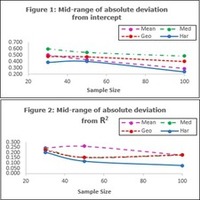Lichens are an organism unlike another. Lichens are a symbiotic mutual relationship between a photobiont (green algae or cyanobacteria) and a mycobiont (fungus). Lichens are the pioneer of new territories such as newly formed larva islands. Living together, they are able to protect each other while making the other component thrive in new lands. Unfortunately for lichens, they grow very slowly, about 1 mm per year. The body of the lichen or the thallus is porous, enabling them to capture particles of the air, accumulating them in their thallus. This acts as an advantage by having air-borne particles of nutrients to be accumulating to the lichens as nutrients. And, this could be a bane, to the lichen itself, as air-borne particles could contain air polluting compounds such as soot, heavy metals and compounds of acid rain. From this particular trait of growing slowly and accumulating chemical compounds and acid rain, the lichens are usually susceptible to air pollution (Rosli et al., 2019).
Lichens can be very colourful depending on the mycobiont components. They can be orange, various hues of green, grey as well as black (Figure 1). If you notice, in the lowlands, lichens are quite similar. The beautiful lichens grow best in non-polluted, cool montane forest, with abundant sunshine. In the mountains is where you can see the diversity of lichens thrive (Zulkifly et al., 2011). There, the pollution is less, the air is damp and with plenty of sunshine. The algae component of the lichens needs the sun’s radiation for photosynthesis, resulting in carbohydrates as food. The mycobiont ‘traps’ the algae component as their own, it is said to be equivalent to humans rearing cows for their own benefit. The mycobiont protects the fragile algae component, making them hydrated as well as providing the needed nutrients for growth (Zulkifly et al., 2011).
Lichens accumulate heavy metals and other chemical compounds. Most lichens are sensitive to air pollution, making them suitable to be a bioindicator of pollution. Certain lichens are not as sensitive to air pollution, as you can see some selected lichens can be found in cities. Studies have shown that their diversity correlates to the pollution of the air. An index of lichen diversity with pollution is called IAP (Index of Atmospheric Pollution). Rosli & Zulkifly (2022) have studied the pollution levels (IAP) at different elevations in Gunung Jerai. They found that interestingly, different elevations of Gunung Jerai correspond to different levels of pollution (Figure 2).
The diversity of lichens is affected by air pollution as well as anthropogenic activities. In some parts of Gunung Jerai, human activities such as mass biking ascending the hills, has destroyed the trails and habitats of trees in the forest, which affect the lichen diversity. In some levels of Gunung Jerai, mass gathering of people and camping, has inadvertently affected the pristine conditions of Gunung Jerai. The study has also found, however, that Gunung Jerai recorded better IAP scores than the adjacent city which is Sungai Petani (Rosli et al., 2019). Nevertheless, numerous efforts have been made by the State Forestry Department and other agencies to preserve the Gunung Jerai area. It is hoped that the information will help the local authorities to continue preserving Gunung Jerai for biodiversity conservation and for future generations.

Figure 1: Selected lichens collected at different altitudes of Gunung Machincang, Langkawi Island, Kedah (a) Parmotrema tinctorum (b) Coccocarpia pellita (Zulkifly et al., 2011).

Figure 2: IAP graphical representation of Gunung Jerai 300 m elevations based on Titi Hayun sampling traill (Rosli & Zulkifly, 2022)
References
Rosli, N. S., & Zulkifly, S., Zaharudin, N. A., Mat Lazim, N.N.F., Ali, A. & Go, R. Lichens diversity and index of atmospheric purity of selected sites in Kedah, Malaysia (2019). Malayan Nature Journal 71(4) 467-473.
Rosli, N. S., & Zulkifly, S. (2022). Application of Index of Atmospheric Purity (IAP) along elevation gradients in Gunung Jerai, Kedah, Malaysia. Environmental Monitoring and Assessment, 194(7), 496.
Zulkifly, S., Kim, Y.S., Abdul Majid, M., and Merican, A.F. (2011). Distribution of Lichen Flora at Different Altitudes of Gunung Machincang, Langkawi Islands, Malaysia. Sains Malaysiana 40(11): 1201-1208
About Author
 |
Dr. Shahrizim Zulkifly
Department of Biology,
Faculty of Science, Universiti Putra Malaysia
Expertise: Lichenology, Phycology, Microbiology, Environmental Biotechnology
Email: shahrizim@upm.edu.my
|
Date of Input: 24/09/2023 | Updated: 25/09/2023 | adib.yusof
MEDIA SHARING




























